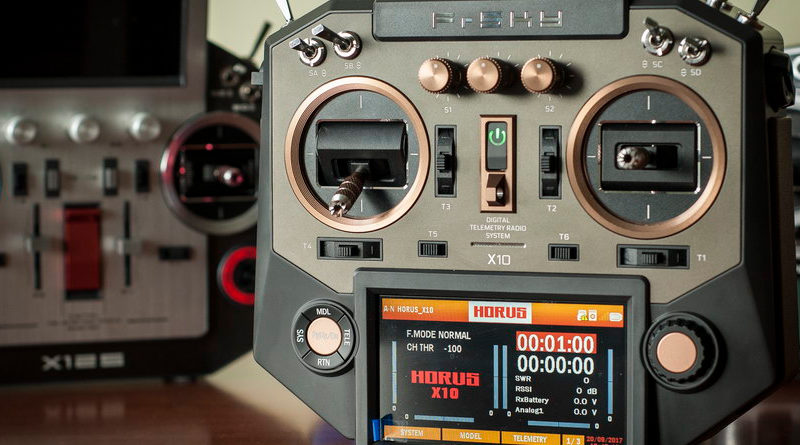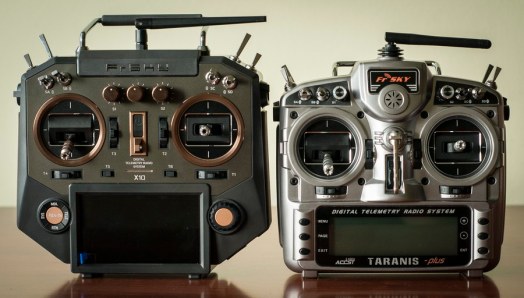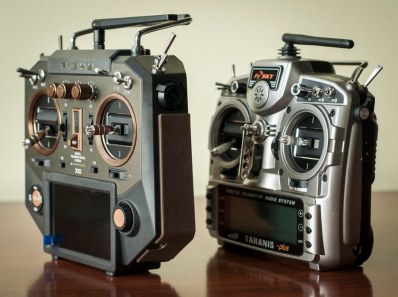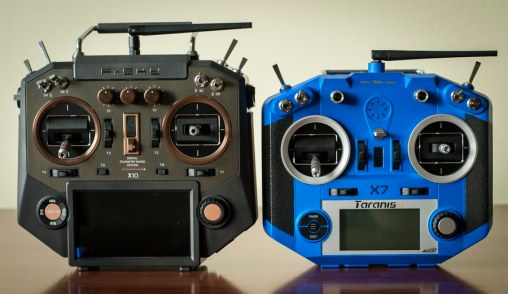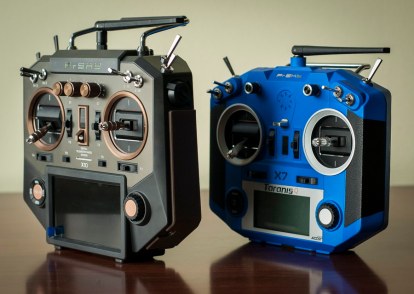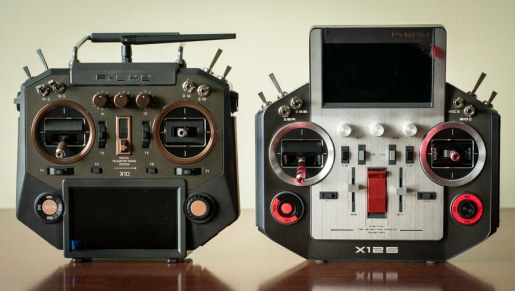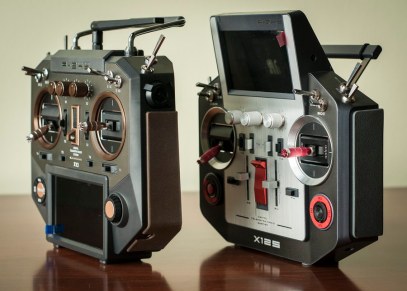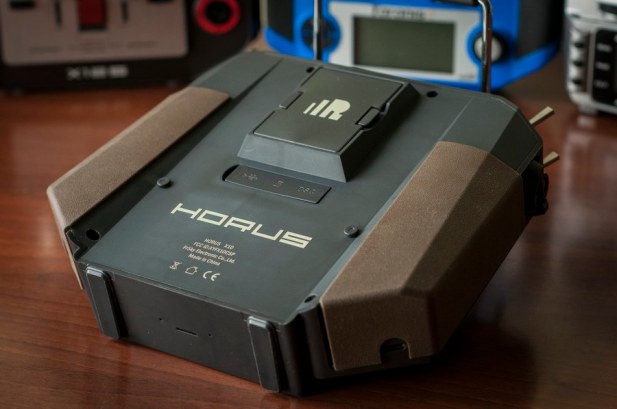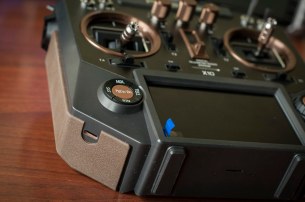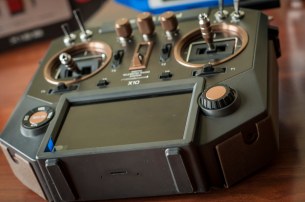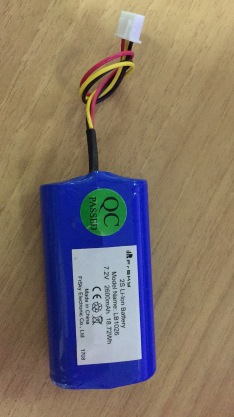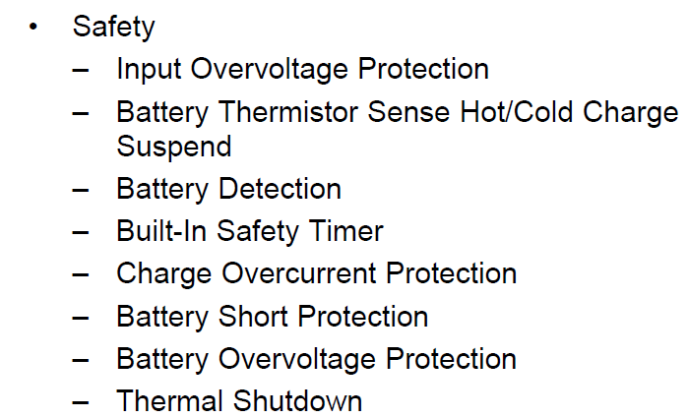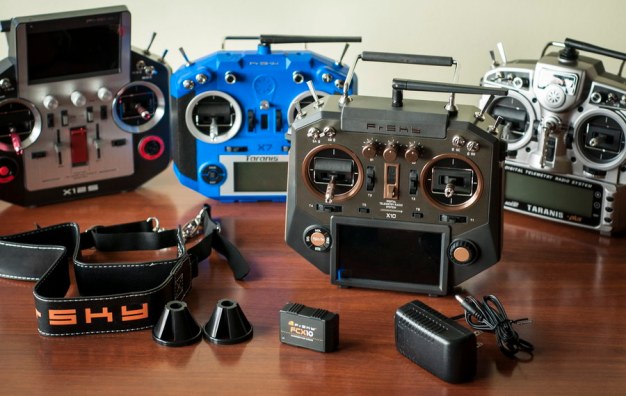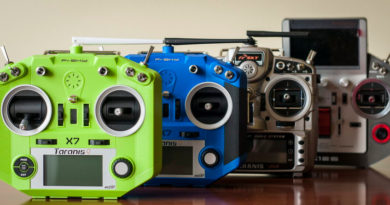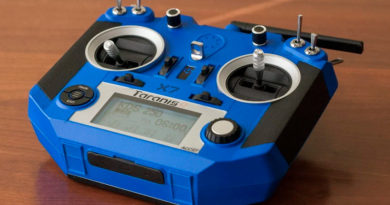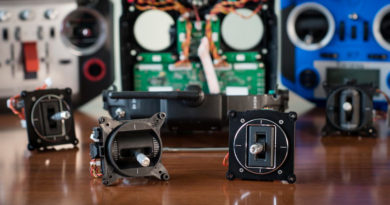FrSKY Horus X10 — review

Hi again to all of our readers. Today we have something very special — brand new radio from FrSKY company — Horus X10.
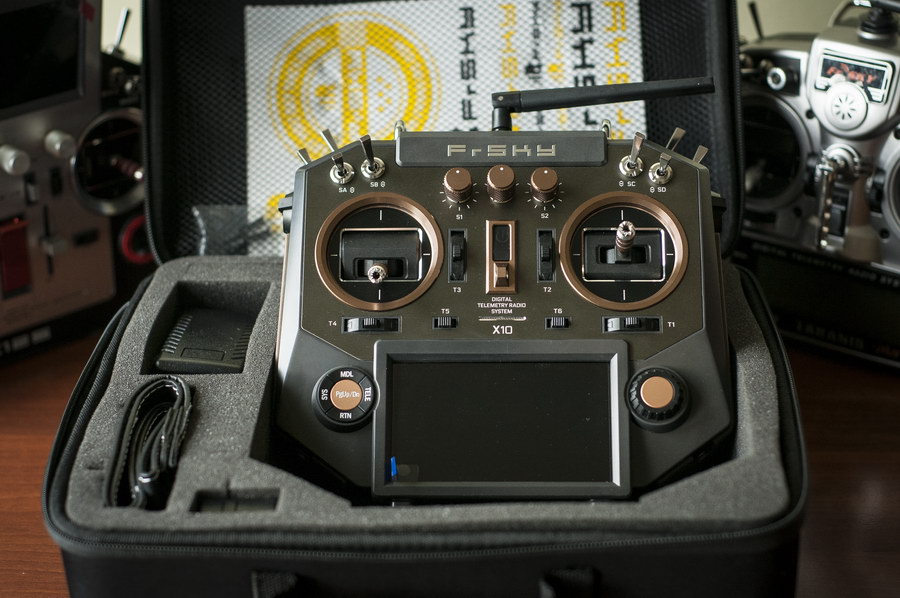
This radio has been announced some time ago and several units were released prior to start of the mass production. We have one of those units on hands and want to share our first impression about this product.
Our personal opinion about the aim of releasing this radio — is to target pilots who have Taranis X9D Plus but were not willing to upgrade to Horus X12S due to more expensive cost or numerous functions. With X10 and X10S release — situation might change! If to take my example — I like Taranis QX7 very much but was using it only as a backup radio because X9D Plus had additional switches and sliders that I am constantly using on my models. X12S was to heavy and large for me… So, the best option would be to have the radio that would incorporate all X9D Plus functionality, would have modern design, bigger screen and that would introduce something new. This day has come — Horus X10|X10S fulfills all of my expectations.
Let’s start with the video:
Technical Specifications and Features:
- Full Weight: 980g
- Operating Voltage: DC 7.2V
- Operating Temperature: -10 ~ 60 ℃
- Operating Current: 350mA@7.2V
- Number of channels: 16 channels (up to 32 channels)
- Model Memories: 60 (extendable by microSD card)
- Transmitter Panel : Silver/Amber/Carbon (for X10S only)
- Built-in iXJT+ module(the enhanced RF performance and the less latency) with 3 antennas (2 are inner V-shaped and 1 external (removable))
- Wireless trainer system (bluetooth module)
- Support FrSky Free Link App for iOS (Download link: https://www.frsky-rc.com/app/), Andoid app in the development
- FrSky FrTX (Support OpenTX System)
- Antenna detection and SWR warning
- Industrial LCD: 480*272 readable outdoor color screen, TN type
- Built-in Li-ion battery, 2,600mAh, 18650 type, 2S, JST balanc plug, with protection
- M10 hall sensor gimbals and extendable stick ends (with ratchet, spring tension andjustment, easy mode change, holow shafts to add stick tips switches)
- External module JR-type compartment
- Dedicated Smart Port
- Dedicated reset button
- 3.5mm headphones jack
- 3.5mm trainer jack
- miniUSB port to connect to PC
- microSD card slot (not supplied)
- micro USB-type C port for dedicated FCX10 charger
- dedicated FCX10 LiON charger (included)
- full Smart Port telemetry
- X, LR, V8II, D receivers
- nonEU and FCC FW choice
- Haptic and voice feedback
- Speaker
- color LED under Power ON|OFF button to infrom different radio states
- 6 x 3POS switches, 1 x 2POS switch, 1 x momentary switch, 2 x side sliders with center detents, 2 x round pots (left with no center detent and right with center detent), 1 x 6POS switch, 6 x trims
- Rotary dial with ENTER at center on the right, MDL|SYS|TELE|RTN decicated button on the left with combined PgUP|PgDW button at center
Seems like every important function and control is present in X10 amd X10S radios.
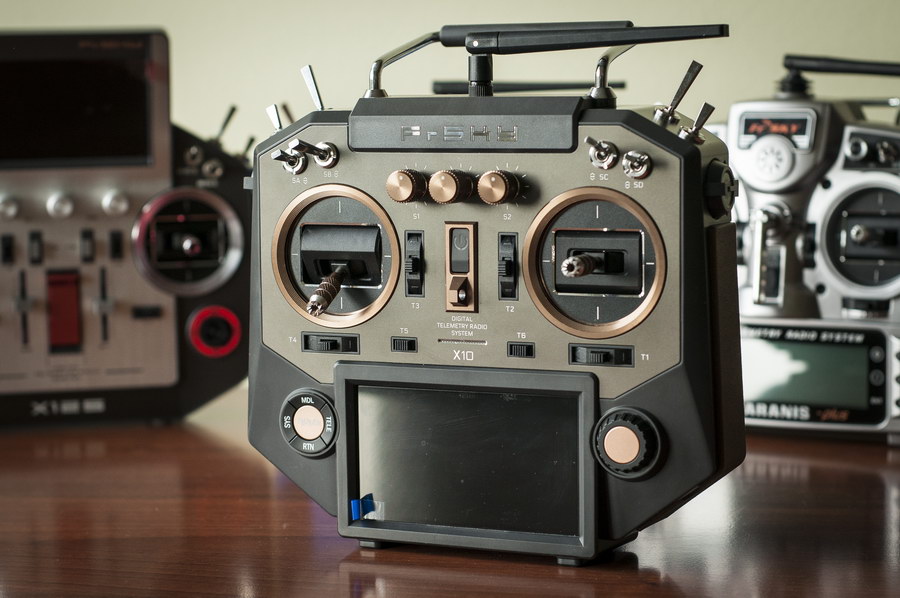
The only difference between X10 and X10S would be the sticks. M10 for X10 and M12 doe X10S (10 bearing design, PWM signal (no ADC), full-aluminum construction). And color scheme — X10S would be available only in carbon-fiber scheme. In future — we would be able to upgrade X10 radio with M12 Hall sensor gimbals from X10S radio (at least FrTX OS has this option) but we have to be careful — if we would change M10 to M12 and viseversa without changing its type in FW — the main board might be damaged.
In order to make this text more convenient to read, we would like to focus on pros and cons of X10 when compared to all other FrSKY radios available.
Let’s start with Taranis X9D Plus:
X10 Pros:
- modern design
- better materials
- feels more expensive
- big color screen
- FrTX and OpentTX FW choice
- newer iXJT+ module with 3 antennas
- detachable external antenna
- additional 6POS switch
- 2 x additional trims
- new and more convenient style of control
- dedicated Smart Port to flash receivers and to tune and flash sensors and modules
- LiON 18650 regular batteries that charge much faster
- wireless trainer and telemetry downlink app for iOS (and Android)
- M10 stock Hall sensor gimbals
- possibility to upgrade stock sticks with additional switches
- comes with stick protectors
- power button with LED indicators
Cons:
- a bit wider — you would have to get used to it
- price
- screen suffering more from direct sunlight
In comparison to QX7:
Pros:
- modern design
- better materials
- feels more expensive
- big color screen
- FrTX and OpentTX FW choice
- newer iXJT+ module with 3 antennas
- detachable external antenna
- additional 6POS switch
- 2 x additional trims
- 2 x additional 3POS switches
- new and more convenient style of control
- LiON 18650 regular batteries that charge much faster
- wireless trainer and telemetry downlink app for iOS (and Android) (available with QX7S)
- M10 stock Hall sensor gimbals (M7 sitcks available with QX7S)
Cons:
- a bit wider and heavier — you would have to get used to it
- price
- screen suffering more from direct sunlight
In comparison to Horus X12S:
Pros:
- newer iXJT+ module with 3 antennas
- new and more convenient style of control
- LiON 18650 regular batteries that charge much faster
- smaller
- less weight
- price
Cons:
- a bit less aluminum in design
- no GPS
- no accelerometers
- no analog joystick
- no additional vertical sliders
- only 1 speaker
- a bit less advanced M10 sticks (but even more advanced M12 sticks in X10S)
So, to summarize — definitely a win over X9D Plus or QX7 radios but a just a fraction behind current flagship X12S. For me — X10 is the most balanced choice that has combined the best solutions from all FrSKY radios including all necessary functionality and excluding very rare things that I am not using. Despite its cheaper price — I still like it more than X12S in terms of design, shape and feel. It just handles better (for me) and more compact.
In the box:
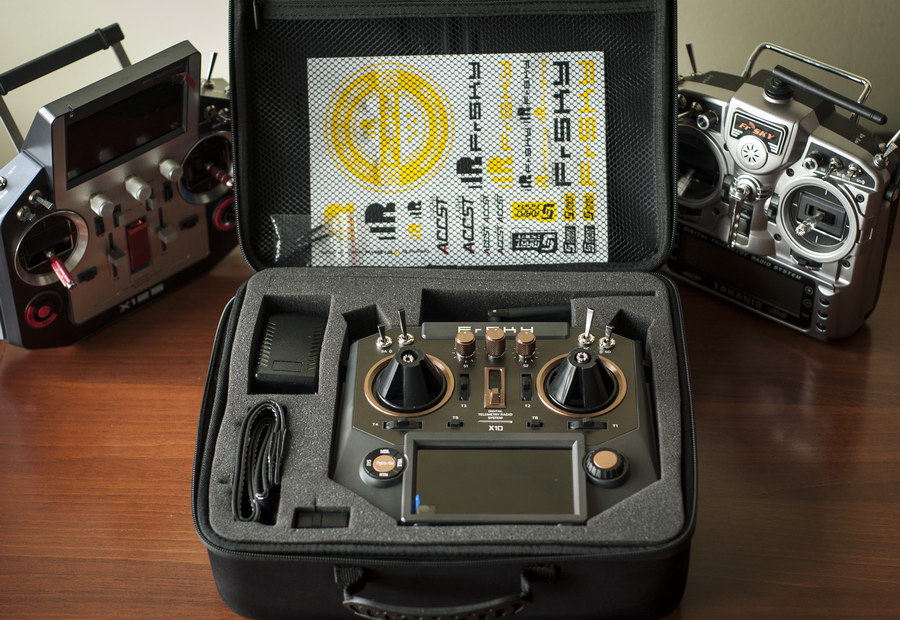
Horus X10 | X10S comes in very good soft case together with neck strap, wall adapter, FCX10 LiON charger and stick protectors.
Controls:
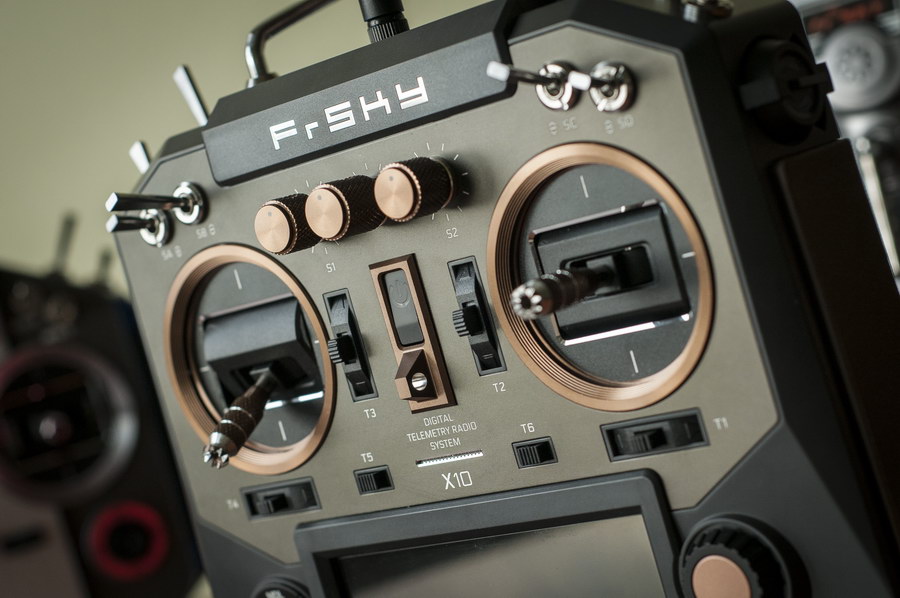
Everything is good here. All controls of X9D Plus are present + additional 6POS switch and 2 trims. Pots are tight enough to have pleasing feel. M10 Hall sensor magnetic gimbals are very smooth and have all the adjustment possibilities to tune it to your liking. Sticks have hollow shafts and there are unused connectors inside the radio to upgrade your sticks with tip switches. Stick length is adjustible and almost similar to X9D Plus M9 construction.

UI control is done with the help of right rotary encoder with ENTER at center — solution that was introduced in X12S but finally settled down in QX7 radio, and left dedicated model, system, teleemtry and return buttons with combined page up and page down button at the center of this circle. Looks like a combination of X12S with QX7 menu controls… But I like this new way of button placement. Didn’t have any problems with control logics when I was setting my first model.
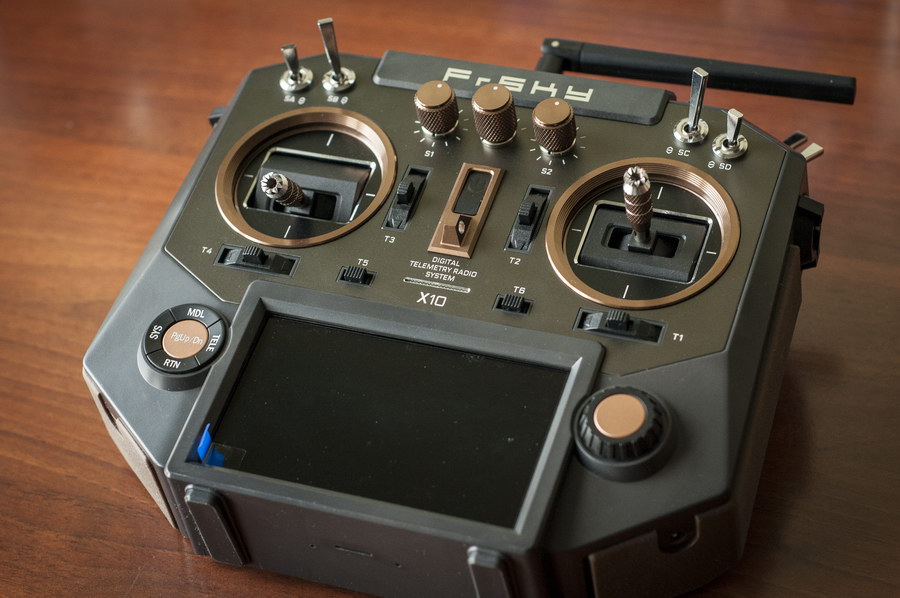
Long and short button press would also bring some additional functionality to each button. But this is the matter of which FW is currently used — therefore, I would not concentrate on that.
Screen:
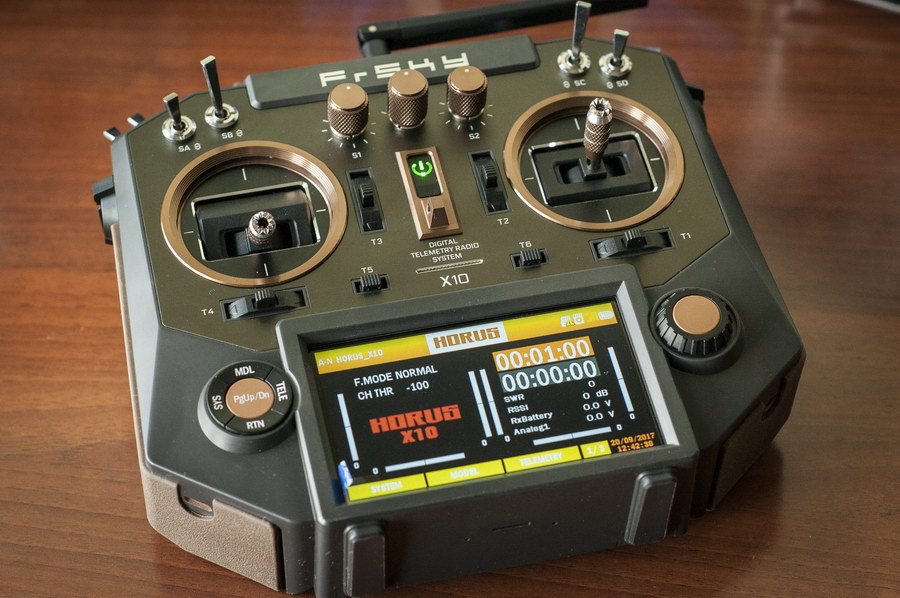
Seems to be the same unit that was introduced with the release of X12S. Same size, resolution and panel type. It is not touch or IPS because such panels would suffer a lot from direct sunlight. This TN panel is perfectly usable outdoors with enough maximum brightness to see the infromation. If you watched my video — you already have a clue what it looks like when exposed to sun.
Ports:
In addition to regular miniUSB, 3.5mm trainer port, 3.5mm headphones jack and microSD card slot (the card itself is not supplied with the radio), we have Smart Port that is used for RX, modules and sensors flashing and tuning + microUSB type-C port for LiON charger. MiniUSB, S.PORT and trainer port are located at the back and covered with rubber protector. So, we would still have some hard times with keeping miniUSB cable attached while placing X10 on the table. On the other hand, FCX10 charger is attached to the bottom left side and doesn’t prevent radio to stand vertically or lay on the back.
*new versions of X10 and X10S are equipped with barrel charger connector instead of USB type-C and have internal charger.
Insides:
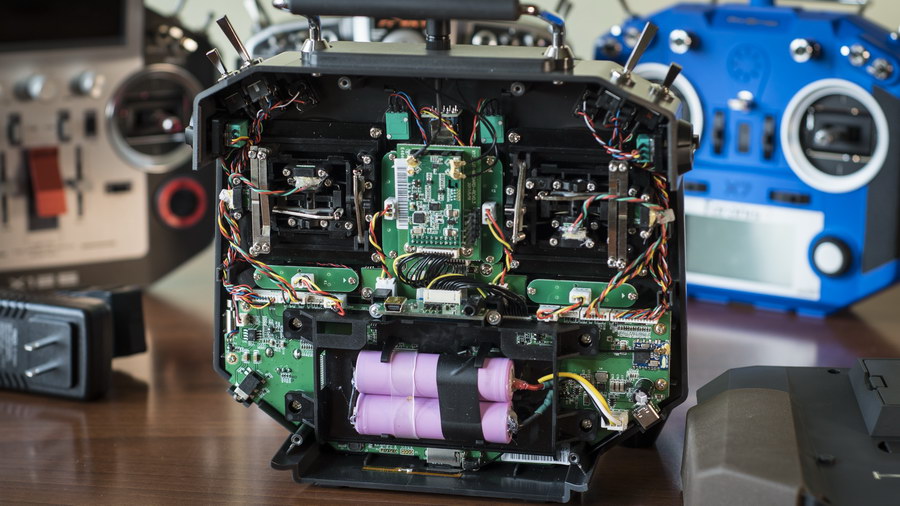
Evеrything is good and neat here. This radio is very easy to disassemble — only 4 screw.
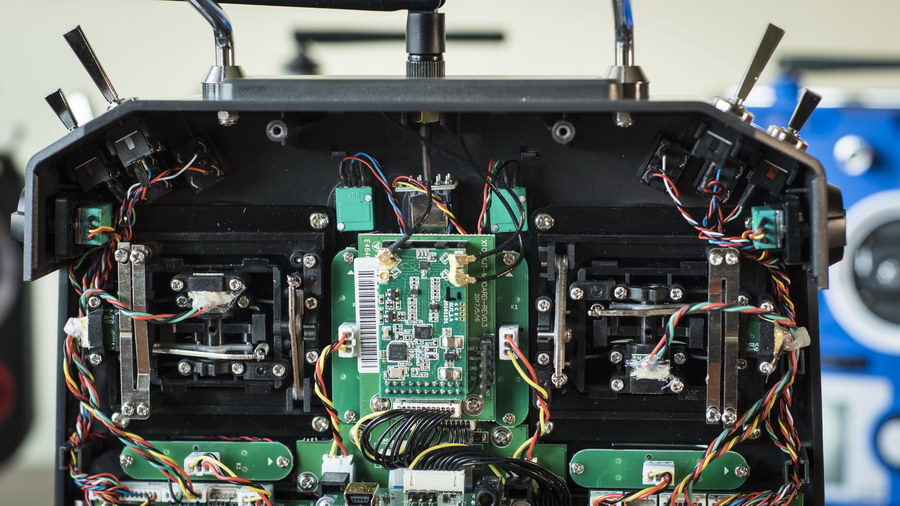
Here you can see 3 antennas attached to iXJT+ module. 2 inner antennas are located in case like that:
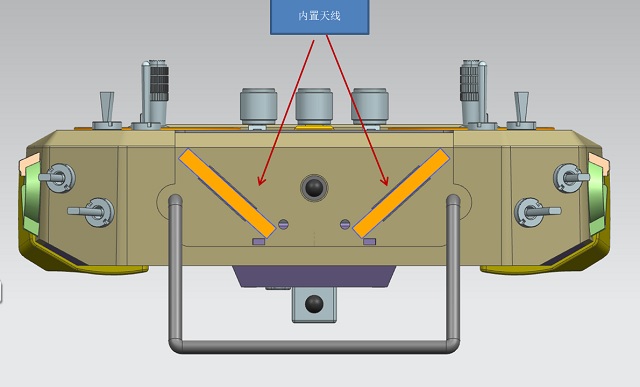
New more flexible and thinner stick cables, bluetooth antenna with the reset button at the bottom part and LiON 18650 elements as radio batteries. Keep in mind that if you would like to substitute stock 2S 2.600mAh 18650 elements (JST 2S balance plug) — you would have to buy dumb 18650 cells and take out protection board from stock cells to use it with the new ones. The charging in X10|X10S works like this:
- 18650 in FrSKY pack are any regular dumb cells
- They have added special protection circuit under pack heat sink that have thermister on board
- Middle contact on 2S JST plug on main board supplies temperature info to FCX10 charger
- FCX10 charger measures the incoming total voltage + temperature and has cells overvoltage, overcurrent, thermal protections, safety timer, input overvoltage protection….
- In case if you want to use larger capacity cells — you would have to use the same board from stock pack
X10|X10S by itself (mainboard) doesn’t have overcharge or overdischarge protection circuits, only reverse polarity protection. Therefore, all other protection should be incorporated in cells or in FCX10. In addition — you cannot use other USB type-C charges to charge LiON batteries inside this radio. Only the dedicated FCX10 charger.
*new versions of X10 and X10S are equipped with barrel charger connector instead of USB type-C and have internal charger.
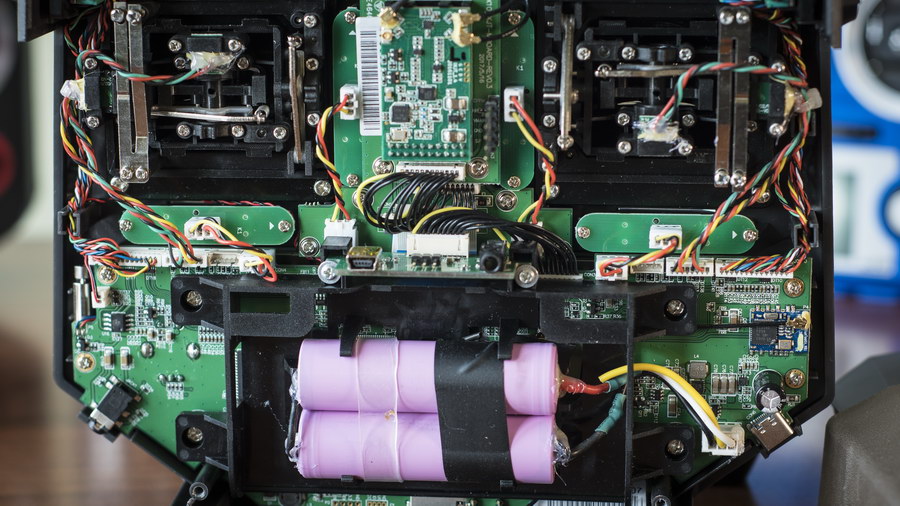
My unit came with no batteries — I’ve installed them myself. So, not very neat….
FrSKY claims 350mAh power consumption. But I’ve measured it to be ~400mA at full brightness. It means that stock battery should last for about 7-9 hours at full brightness (in fact — it is, tested). Supplied FCX10 charger outputs 1.5A which means that it would take about 1.5 hours to recharge. As stated on RCG — despite 17V provided by the stock wall charger you can feed 12V from car charger to FCX10 and the charger works fine. So, the problem of charging in the field is solved.
*new versions of X10 and X10S are equipped with barrel charger connector instead of USB type-C and have internal charger.
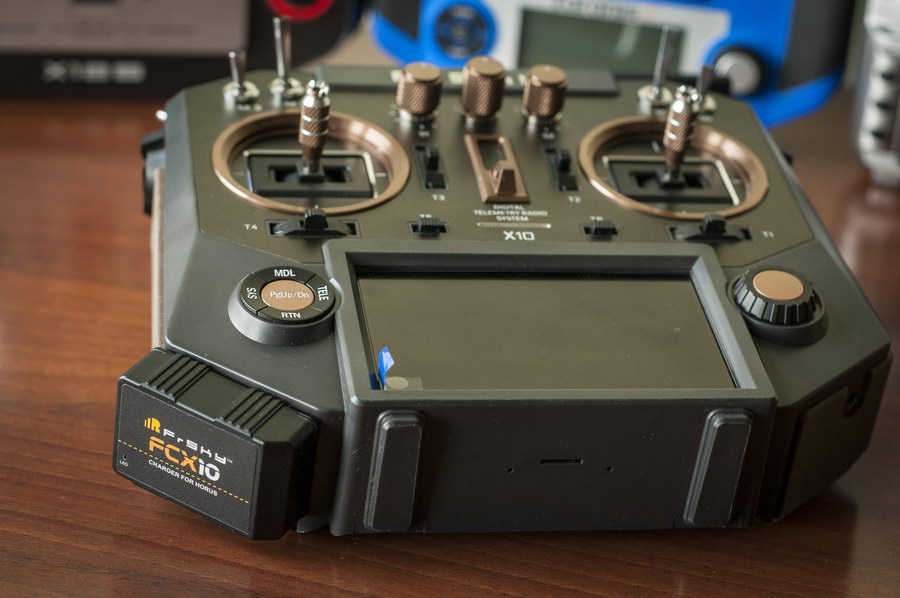
Much better and faster than NiMH batteries in all other radios. FCX10 charger has LED inficator that is constantly lit while charging and goes OFF when charge is completed.
There are many mods already performaed by different pilots that use 4×18650 elements with 6Ah total capacity instead of stock battery.
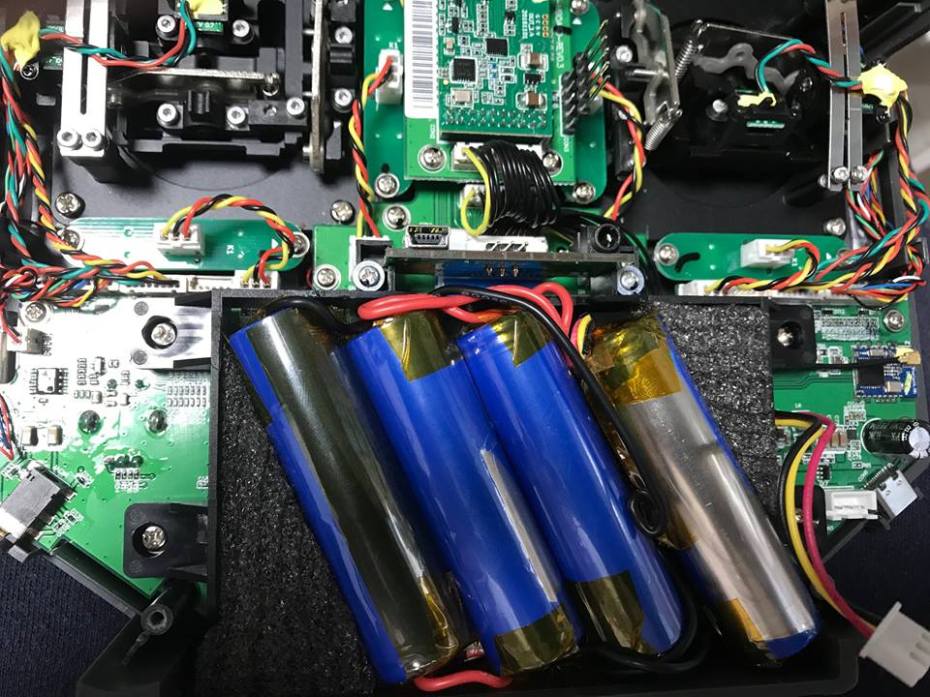
Overall feel:
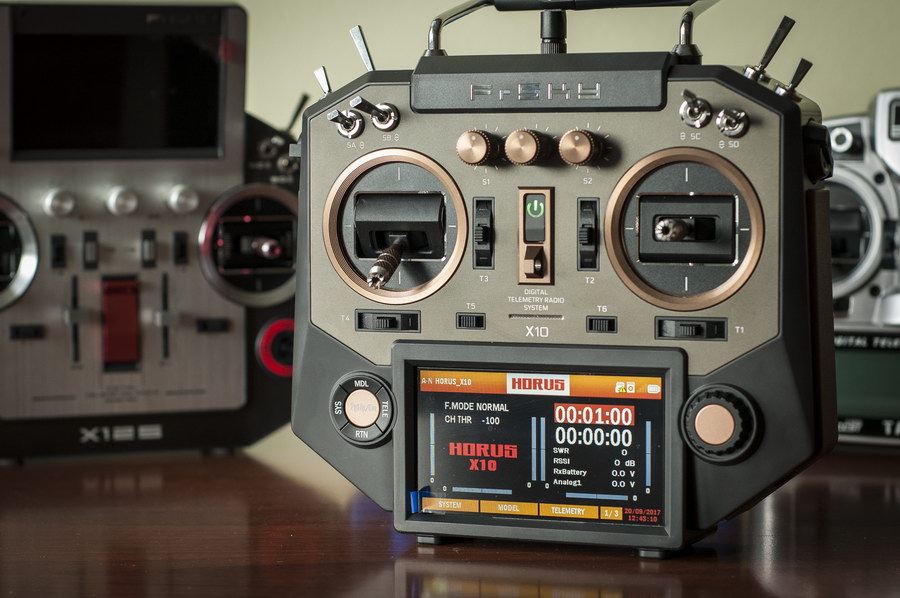
In overall, this radio feels very balanced and convenient to use. I am a thumb flyer with short fingers and small hands. But I would say that it wouldn’t take much time for me to completely move to X10 from X9D Plus despite its larger size and more distance between some controls. This radio is so attracting to me that I’d happily face all difficlulties of getting used to the handling in favor of using it in future.
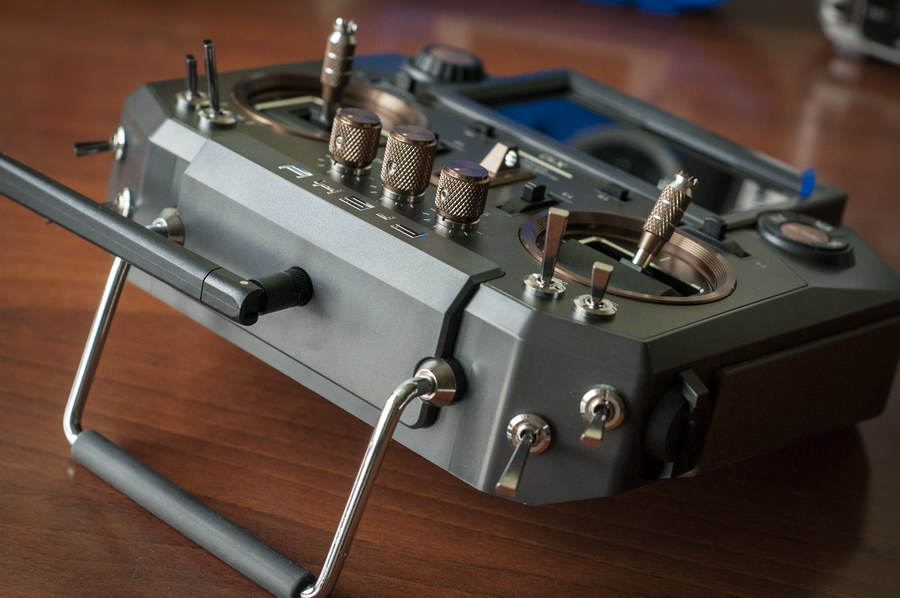
Rubber grips do a great job and my middle fingers are right behind upper switches. Yes, the overall feeling is new after 4 years of using X9D Plus, but I’d get over it. The only element that was always questionable — is 6POS switch in the middle that cannot be easily reached. The only option to use it is to release one of the sticks and make a move
For TBS Crossfire users:
There is a hardware mode that enables 400k baud between the radio and TBS module. You can find HW board here: LINK How ro perform this mode HERE And how it loks inside X10 here:
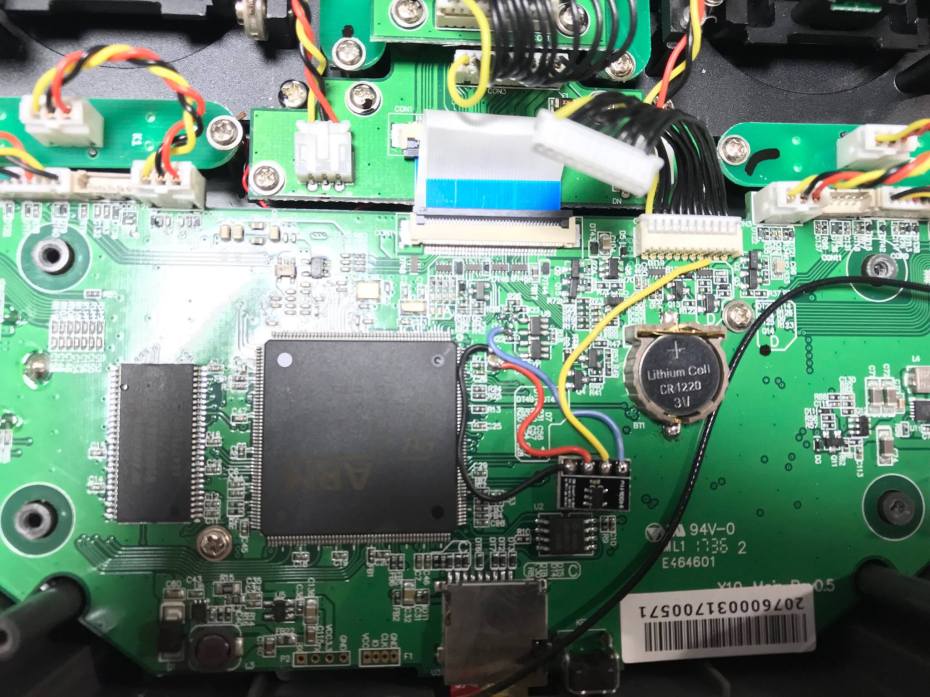
FW:
OpenTX released their nightly builds that include both X10 radios. I already installed OpenTX to X10, transferred all my models from X9DPlus using OpenTX Companion and tried to fly. Seems to be working well.
Links to OpenTX FW:
- OpenTX Companion nightly builds http://downloads-22.open-tx.org/nightlies/companion/windows/
- SD card contents http://downloads.open-tx.org/2.2/nightlies/sdcard/
- How to install OpenTX to X12S (applies to X10 | X10S as well) https://www.frsky-rc.com/wp-content/uploads/2017/07/How%20to/How%20to-X12S/HOW%20TO-Horus%20X12S-170531.zip
Stock FrTX also works good. I could manage to set all my racing quad models with all necessary special functions, mixes and logical switches.
Overall impression:
Very good. Probably the best radio from FrSKY so far. X10 in Amber color scheme is the most beautiful unit I’ve ever seen. FrSKY definitely made a giant leap ahead in terms of design, details, crafting and making the first impression. They’ve learned a lot from the experience of releasing all previous products and tried hard to remove all possible issues — if QX7 and X12S releases were facing some minor flaws with final products — X10 radio seems to be 100% ready. This is first radio I want to use as my main unit right after I’ve taken it out from the box and switched it on. From exterior design and smallest details to declared functionality and feel — everything fulfills my expectations. And I’d definitely be moving… I can predict that this product would become one of the most selling radio on the market and a perfect upgrade for all X9D Plus owners as well as the best in class radio for all other users.

